MSR Hubba Hubba Bikepack 2 review: Lightweight, storm-proof shelter with room to stretch
A superb tent, tweaked to make it perfect for pedal-powered adventurers


MSR’s family of Hubba Hubba hiking tents are much-beloved shelters in the backpacking world. The design is popular for its combination of lightweight packability and high performance levels in all kinds of conditions. The Bikepack 2 is essentially the same ace tent as the 2-person Hubba Hubba for backpackers, but with pruned poles and a brilliant waterproof bag tailor-made to go straight on the bars of your bike. Used properly it’s a great shelter, that’s very easy to carry when you’re rolling around trails instead of roaming them, but take extra care with the poles.
-
+
Smart design
-
+
Two doors and vestibules
-
+
Excellent interior and awning space
-
+
Fantastic waterproof handlebar bag specifically designed for bikepacking
-
+
Natural-coloured fly perfect for stealth camping
-
+
Good extra features (gear lofts, pockets, clothes line, rain gutter)
-
-
Not the lightest 2-person tent around
-
-
Shorter poles sections has marginally increased weight and reduced strength
-
-
No recycled content used
-
-
Can’t be pitched outer first
-
-
Not the highest HH rating
Why you can trust T3
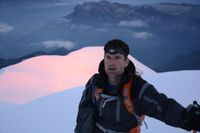
MSR is an acronym for Mountain Safety Research, but in the outdoor world it’s also generally accepted as shorthand for top-quality camping and adventure gear.
The American brand makes everything from lightweight camping stoves and cooking pots to great tents, and most outdoor enthusiasts regard their gear with respect. It’s not cheap, but it is designed and built to be used in the wilds by people who clearly get out and play in such environments themselves, and it is invariably well thought-through and highly functional.
The MSR Hubba Hubba tent has been around for over 20 years, and aside from the occasional tweak, the basic design (built around an innovative pole hub skeleton) has remained the same because it performs (and sells) well – even if it doesn’t boast the highest hydrostatic head ratings or lowest carry weight.
There are various iterations of the Hubba Hubba available now – to suit different kinds of camper, adventuring alone or in groups. The one I’ve been testing here is the version of the shelter made for those who like to go bikepacking, which comes with a tailor-made waterproof bar bag to make packing the tent on your bike extremely quick and easy.
MSR Hubba Hubba Bikepack 2 review
Price and availability
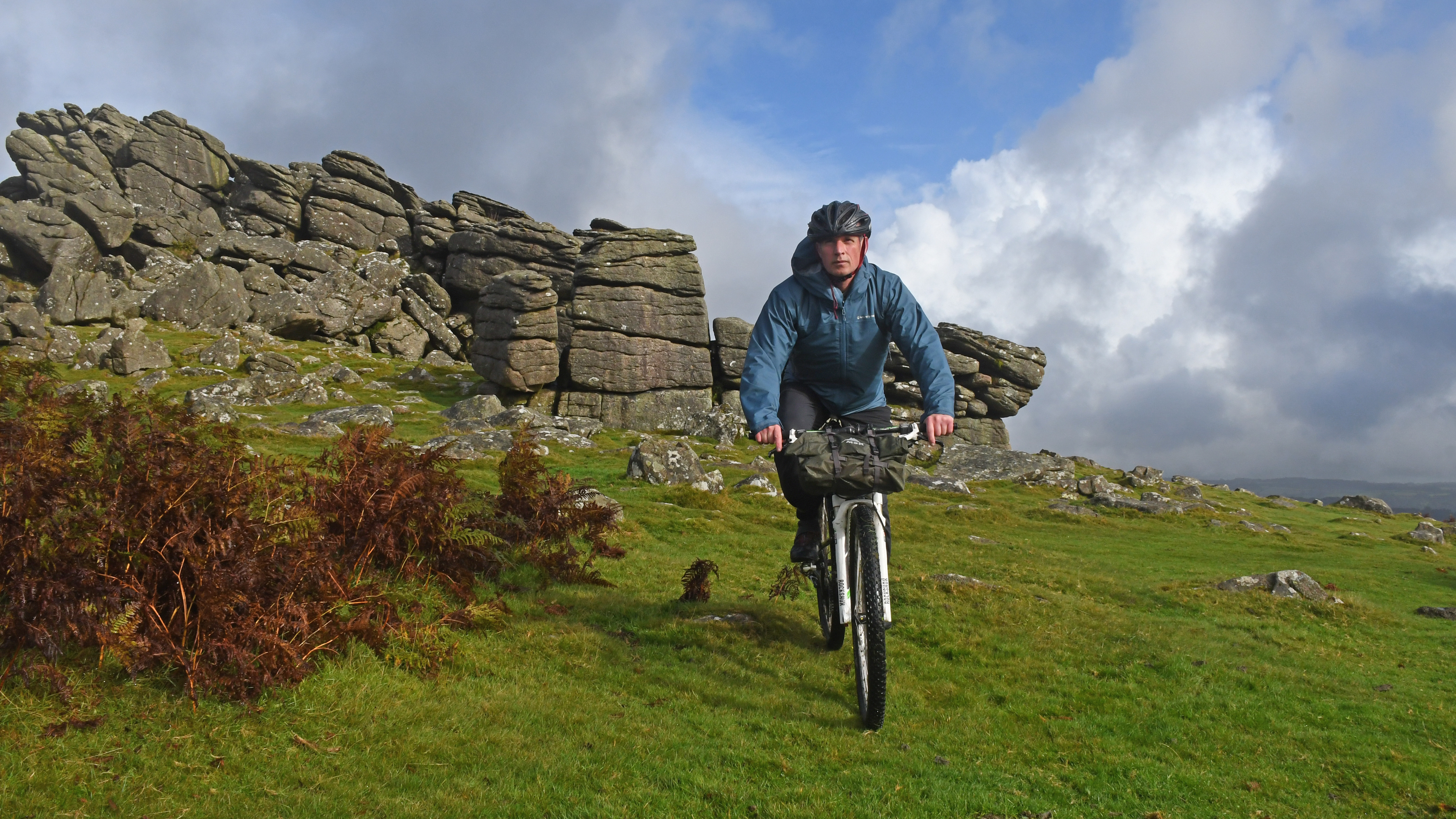
The MSR Hubba Hubba Bikepack 2-Person Tent is available now, online and from numerous high street adventure outlets, for a full recommended retail price of £590 in the UK, from $580 in the US and AU$1,200 in Australia.
Specifications
- Style: Free-standing, geodesic-dome pole tent
- Pack size: 37 x 18 x 13cm / 14.5 x 7 x 5in
- Pitched dimensions (L x W): 2.13 x 1.27m / 84 x 50in
- Interior Peak Height: 107cm / 42in
- Floor area: 2.70 sq m / 29 sq ft
- Packed weight: 1.71kg / 3lb 12oz
- Seasons: 3
- Capacity: 2 people
- Doors: 2
- Vestibules: 2
- Flysheet hydrostatic Head rating: 1200mm
- Fly fabric: 20D ripstop nylon polyether urethane & silicone
- Canopy fabric: 10D polyester micromesh / 20D ripstop nylon & C0 DWR
- Groundsheet: 20D ripstop nylon 1200mm polyether urethane & C0 DWR
- Poles: DAC featherlite NSL Green (folded dimensions: 30cm / 12 in)
- Pegs: 8 hooked needle stakes
- Pitch time: 10 minutes
- Colour: Green
Design and materials
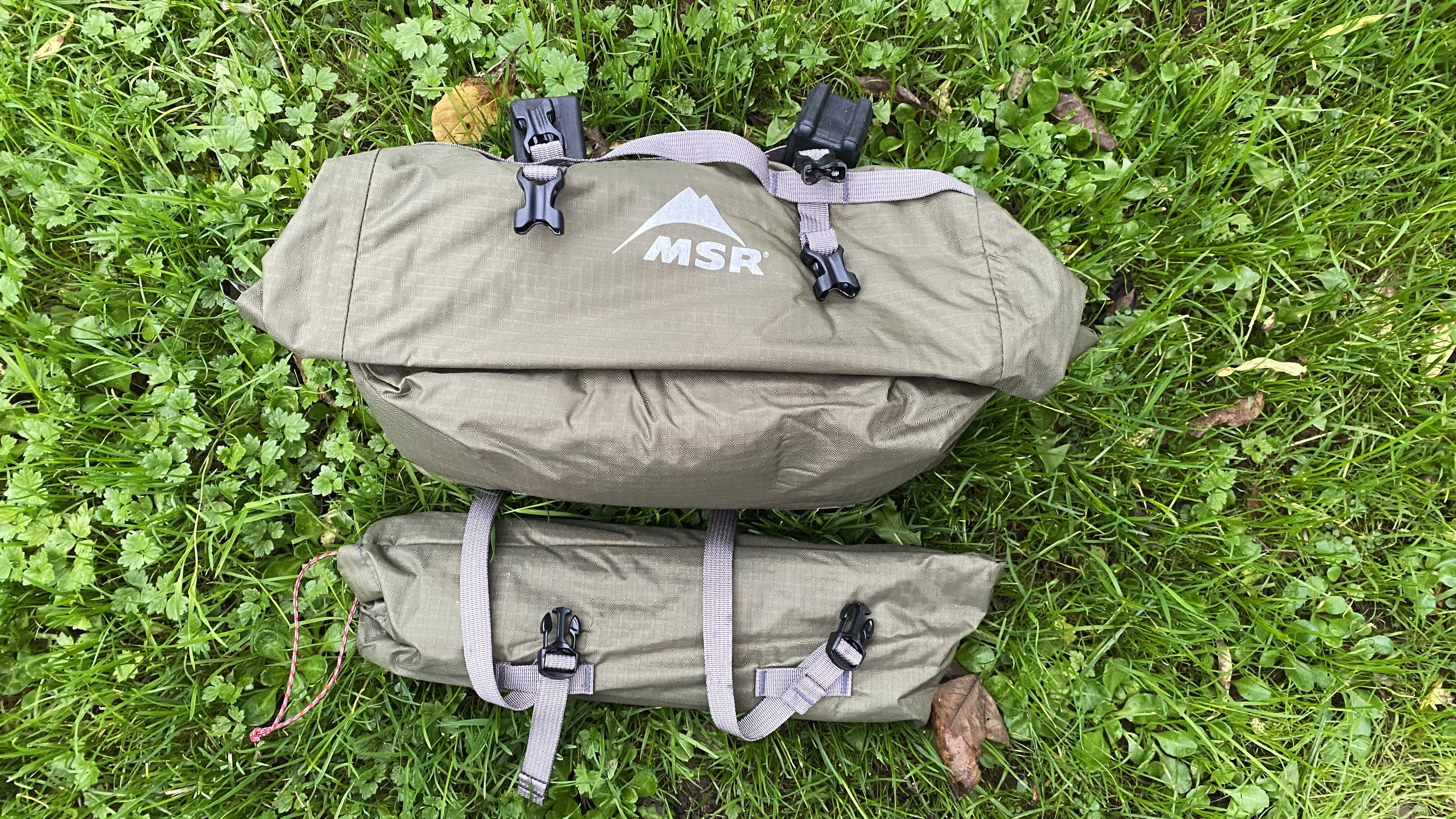
I wouldn’t usually start a tent review by talking about the carry bag, but in this case it’s one of the most innovative elements of the tent (beyond the fantastic features the Hubba Hubba range of tents is already famous for). The waterproof roll-top bag is specifically designed to fit securely on the handlebars of any kind of bike (with flat or drop bars) so regardless of whether your steed of choice is a gravel bike, a mountain bike or an off-road e-bike, this tent can be very quickly strapped to the bars. There are spacers, so the bag is kept clear of cabling and you can still mount bike lights and other features, and the bag has reflective flourishes for safety.
Get all the latest news, reviews, deals and buying guides on gorgeous tech, home and active products from the T3 experts
MSR list the ‘minimum weight’ of the Bikepack 2 tent as 1.4kg (3lb 1oz), but as far as I can see, this would involve dispensing with the bag, which would be like castrating its USP. With the bag it tips the scales at 1.71kg (3lb 12oz) – there are definitely lighter 2-person tents out there, but when it comes to bikepacking, I’m happy to carry a few extra grams if the gear is easy to fit on the frame, seat or bars, and this tent ticks that box perfectly.
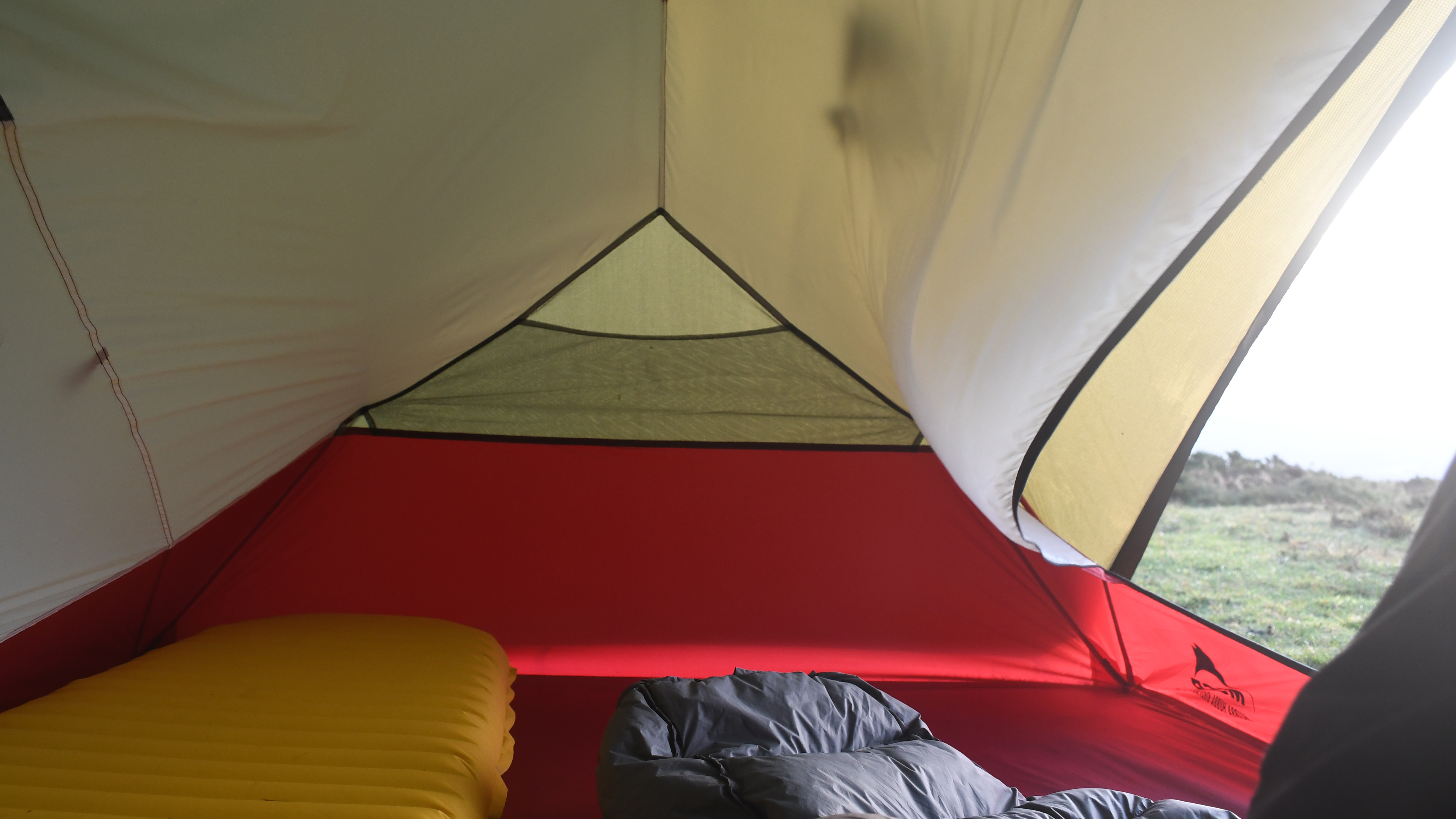
Like the rest of the MSR Hubba Hubba family, the Bikepack 2 tent is designed around a hub-style pole configuration that gives the shelter a strong geodesic-dome structure and shape, while also facilitating two spacious vestibules. There is one main, multi-section (25-piece) >-< shaped pole, and another much smaller crossbar, all made from lightweight aluminum by well-respected pole-producer DAC [external link]. The length of the pole sections has been reduced on this model, so the packed tent can fit on the bars of your bike, as per above, but this does create a thick cluster of poles to content with when the sections are all folded up. The tent comes with eight lightweight, hooked needle stake-style pegs, which is just enough to pitch it with a couple of guy ropes out.

The 20D ripstop flysheet is made from nylon, making it tough and lightweight, but it does only have a hydrostatic head of 1,200mm, which is perfectly decent, but many other backpacking tents offer more comprehensive waterproof cover. Door zips are all simple and intuitive to use, and the vestibules feature ‘StayDry’ rain gutters to keep the rain off while you’re cooking and sorting kit.
The spacious inner is rectangle-shaped, and there are two doors leading out to the twin vestibules. There are good pockets and an excellent gear loft in this tent, so it’s easy to keep kit organised, and you can hang torches or little camping lanterns up for some illumination. The Hubba Hubba even comes with a clothesline, so you can hang soggy cycling tops and riding shorts up once you reach camp.
On the trail
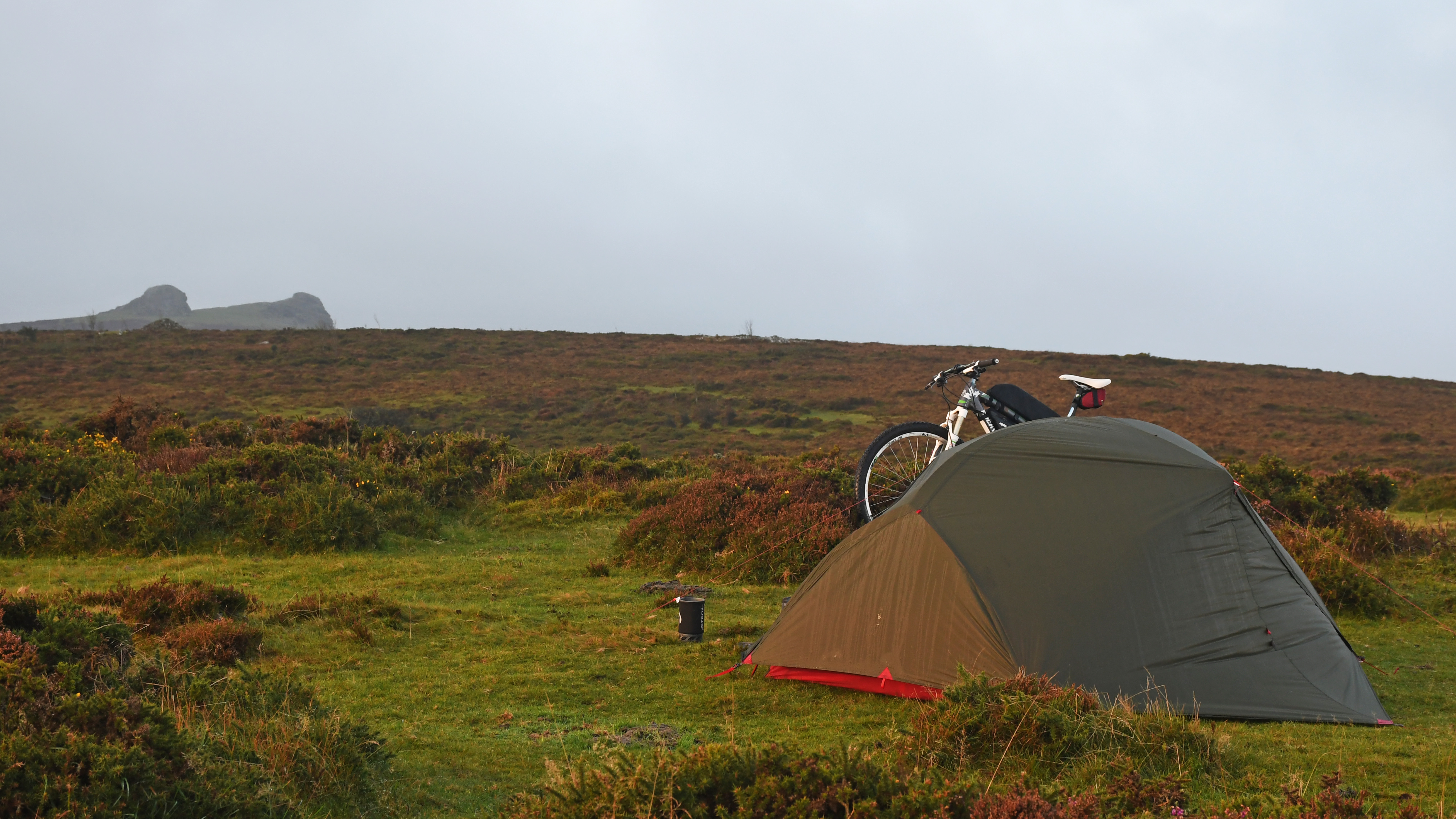
I have been testing the Hubba Hubba Bikepack tent during pedal powered adventures across Dartmoor, wild camping on the glorious commons while I still (legally) can. I didn’t begin trail testing the tent until the tailend of the summer season, and so most of my escapades have been in autumn, during some pretty feisty weather conditions.
The overall geodesic-dome shape of all MSR Hubba Hubba tents means they can cope with fairly ferocious winds (if you face the tent correctly) – which I was especially happy about during one night in particular, when I was pitched up atop Black Hill, between Haytor and Hound Tor and a storm came to visit during the night. The cross pole design means the tent does flap about a bit, but it stayed standing, even with a comprised spine (more about that below).
Designing a bag (and pimping the poles) so that the Hubba Hubba Bikepack tent fits on the bars of any bike is a stroke of absolute genius. I love bikepacking, but fitting the bigger items – chiefly my best sleeping bag and a good lightweight tent – into the limited space available in frame and saddle bags is always a massive, time-consuming challenge, so being able to simply attach your tent to bike bars in seconds is superb.
The spacers work well and the waterproof construction of the bag both protects the tents and makes it easy to clean when you inevitably get it filthy out on the trails. This waterproof bag makes it a good tent for canoe camping too, and the reduced sized poles means it also fits in many panniers.
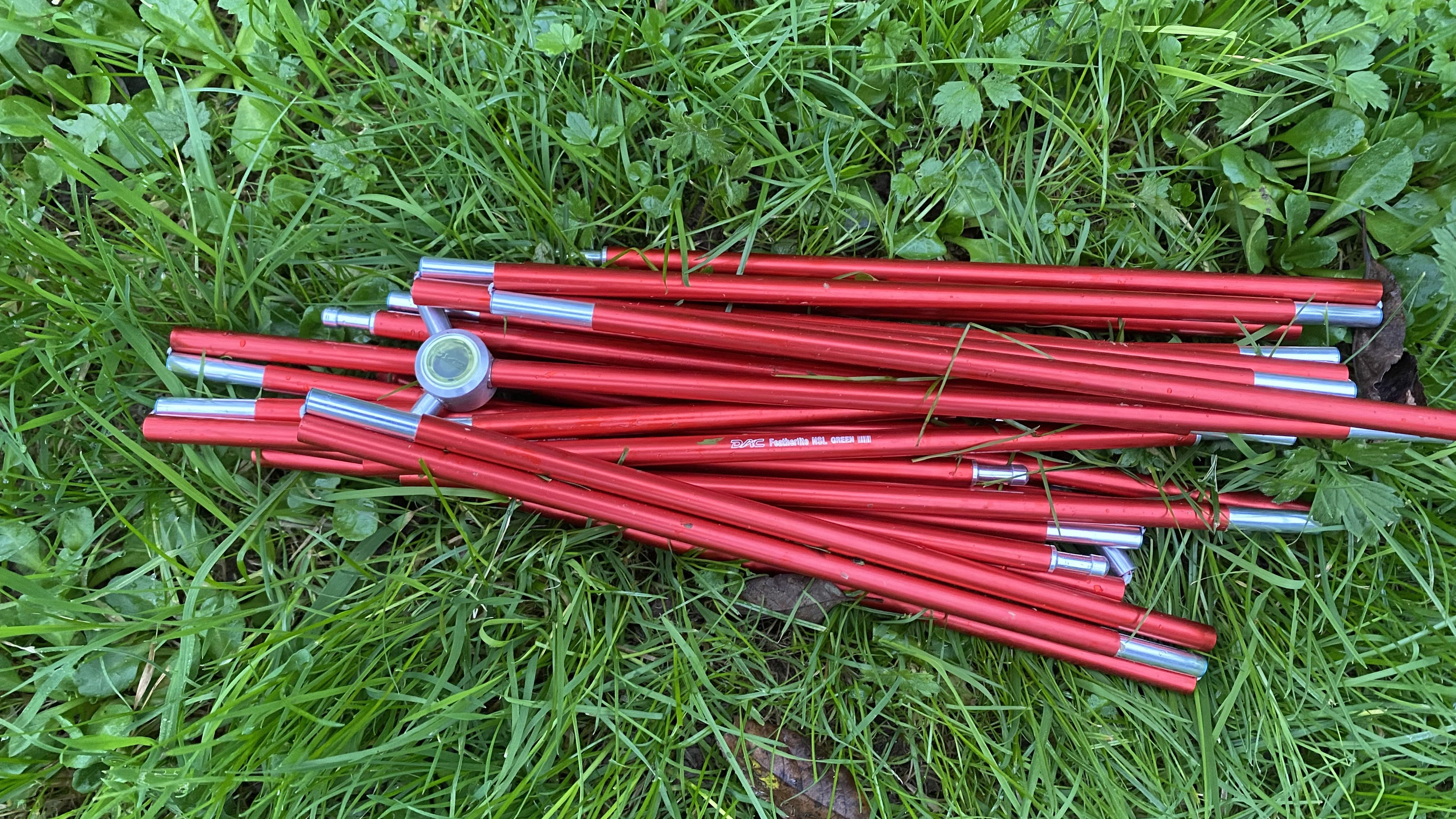
But… because the pole parts have been shortened, to achieve a better fit when strapped on your bike bars (good idea in theory) the trade-off is that there are a lot of sections (25 in the largest part of the skeleton), and therefore more joints, and this does make the whole thing a little unwieldy, slightly heavier and – I think – a bit weaker. The tent isn’t hard to pitch (once you’ve done it a few times), but one night, when setting up camp after dark in nasty conditions, by light of my trusty headlamp, I inadvertently put one of the pole ends in the wrong eyelet and when I bent the pole, the sheath around one of the joints split.
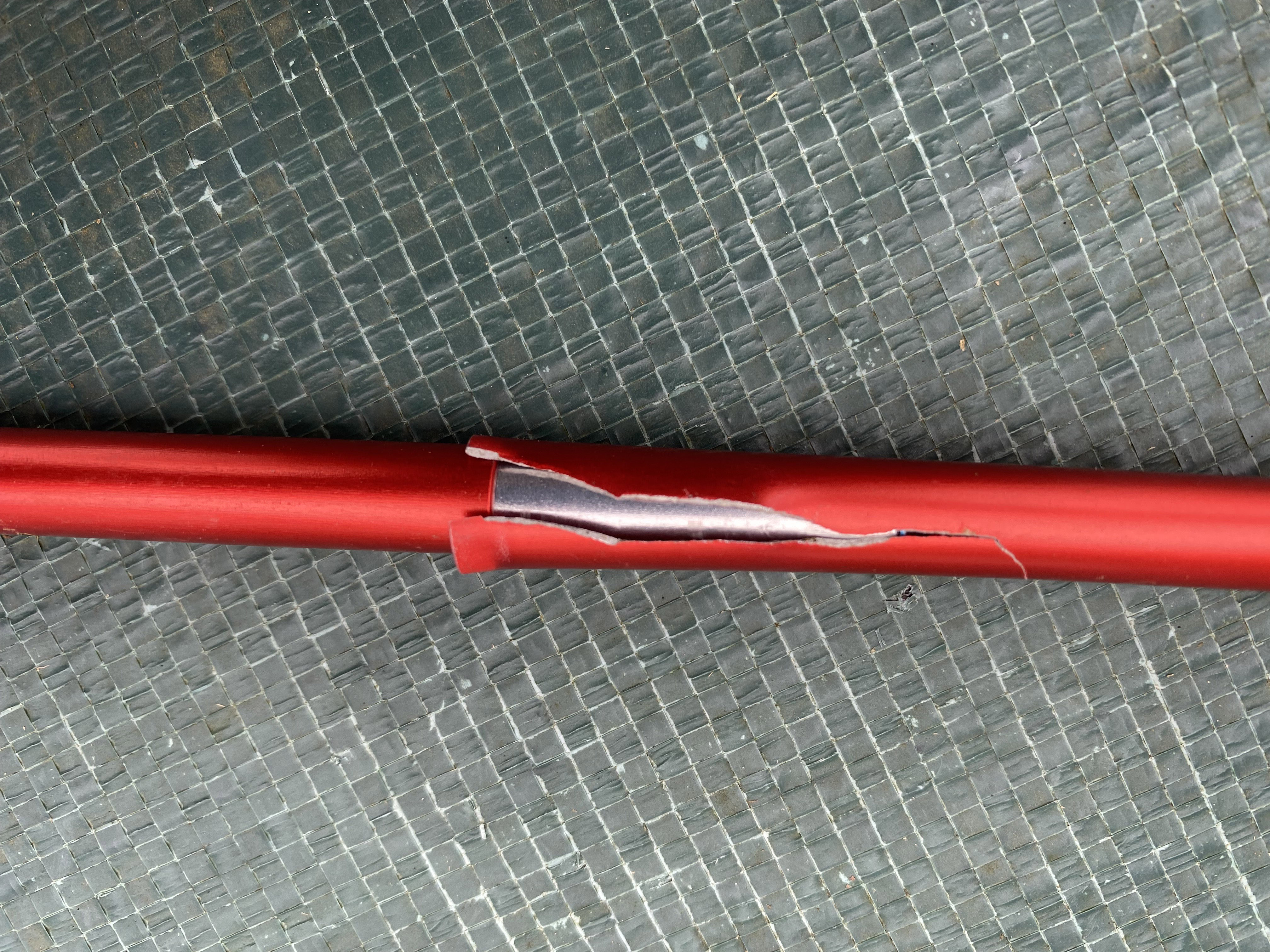
I have to admit user error here, because I absolutely made a mistake, but I don’t think I was exerting enough pressure on the pole for it to fail like it did, and I was surprised and disappointed that a DAC product would be so weak. (And not a little worried that I was in for a long, uncomfortable night.) Ultimately I was able to splint the damaged section and the tent held up fine, despite the stormy conditions, which is a testament to the design and quality of the other components.
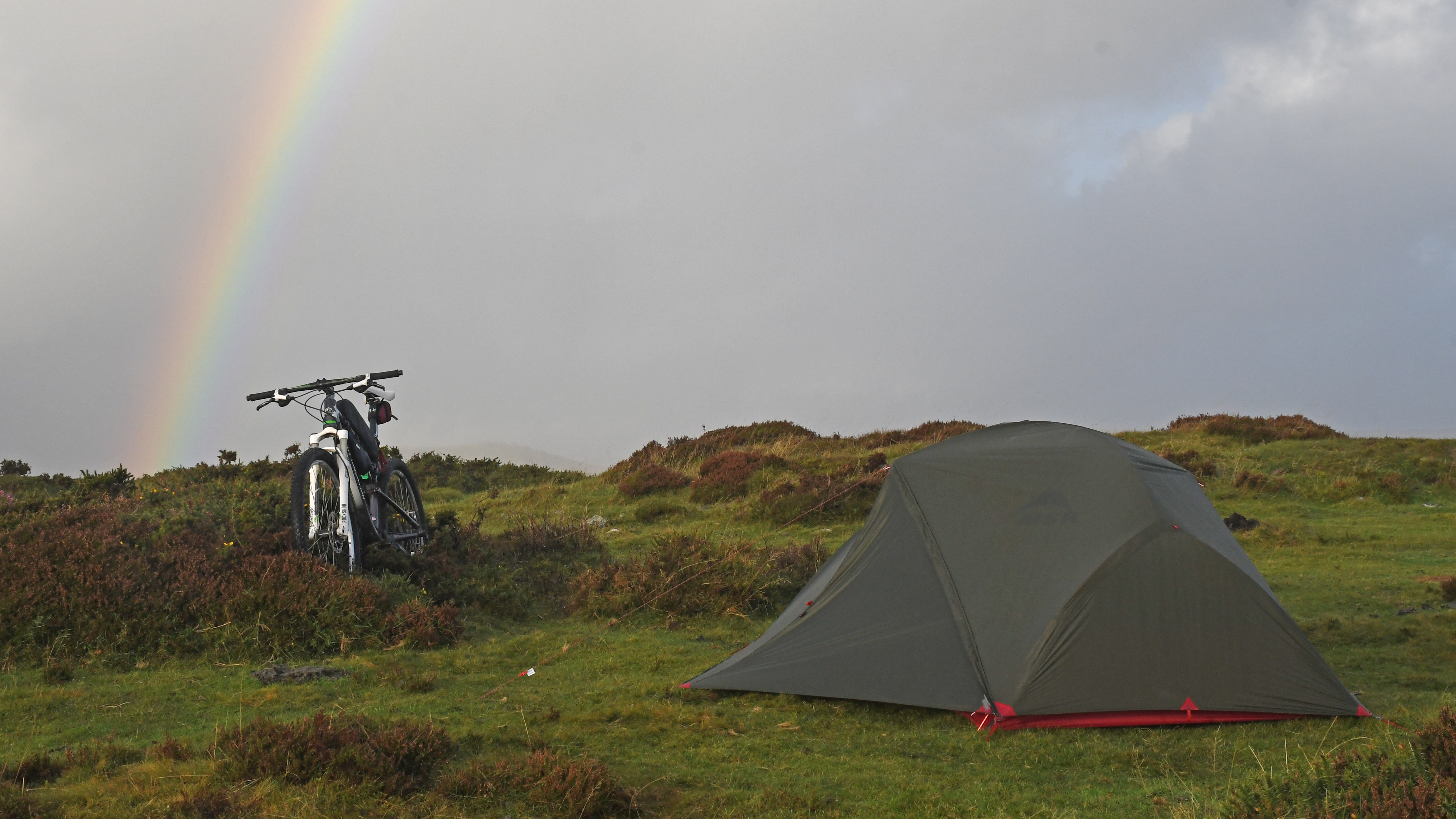
But back to the positives, of which there are many. The inner is a true rectangle shape, instead of tapering, and I much prefer this in a two-person tent – it gives each person a proper amount of space, and means you can sleep top-and-tail if you prefer to arrange yourselves thus (not everyone wants to breath the same air in close quarters with a platonic bikepacking partner).
I also love the dual door and double vestibule design, which gives each person their own entry and exit (so you don’t need to wake each other up or climb over your tent buddy to answer late-night calls of nature). It’s also excellent for storing packs and kit, keeping things organised and for preparing and (carefully) cooking food in wet weather.
I am also a big fan of the natural green colour of the fly sheet on this tent, which allows you to stealth camp – something that will come in extra handy across my Dartmoor playground if the courts side against wild campers. In dry conditions (if we ever get any), the Hubba Hubba can be pitched and used without the fly, and the mesh material means you can lay back and stare at the stars while you drift off. Lovely.
Verdict

The concept of tailor-making a tent for bikepacking is one I love and applaud, and as you would expect, MSR has made a great stab at it with the Hubba Hubba Bikepack 2. The brand has basically just taken its best-selling backpacking shelter, made some minor tweaks and designed a clever bag that makes it very easy to transport the tent on the bike.
This alone instantly warms the heart of every pedal-powered camper out there, all of whom have laboured for hours trying to squeeze tent bits into tiny frame and saddle bags. However, some of these seemingly small alterations – to the poles in particular – have potentially introduced a weakness.
Overall, though, While MSR have had some criticism in the past for sacrificing durability and strength to lessen the carry weight of their tents (and, as described, I had my own dramas with one pole section), the overall design of the Hubba Hubba shelter remains one of the very best on the market. Just make sure you have the poles in the right holes (it’s really not that hard).
Also consider
For a lighter 2-person tent, Sea to Summit’s Alto TR2 is well worth a look, as is the award-winning Meteor Lite from Sierra Designs. If you’re flying solo on your bikepacking escapade, and want a lighter 1-person tent, consider the superlight Vango F10 Neon UL1 or the excellent Alpkit Soloist.
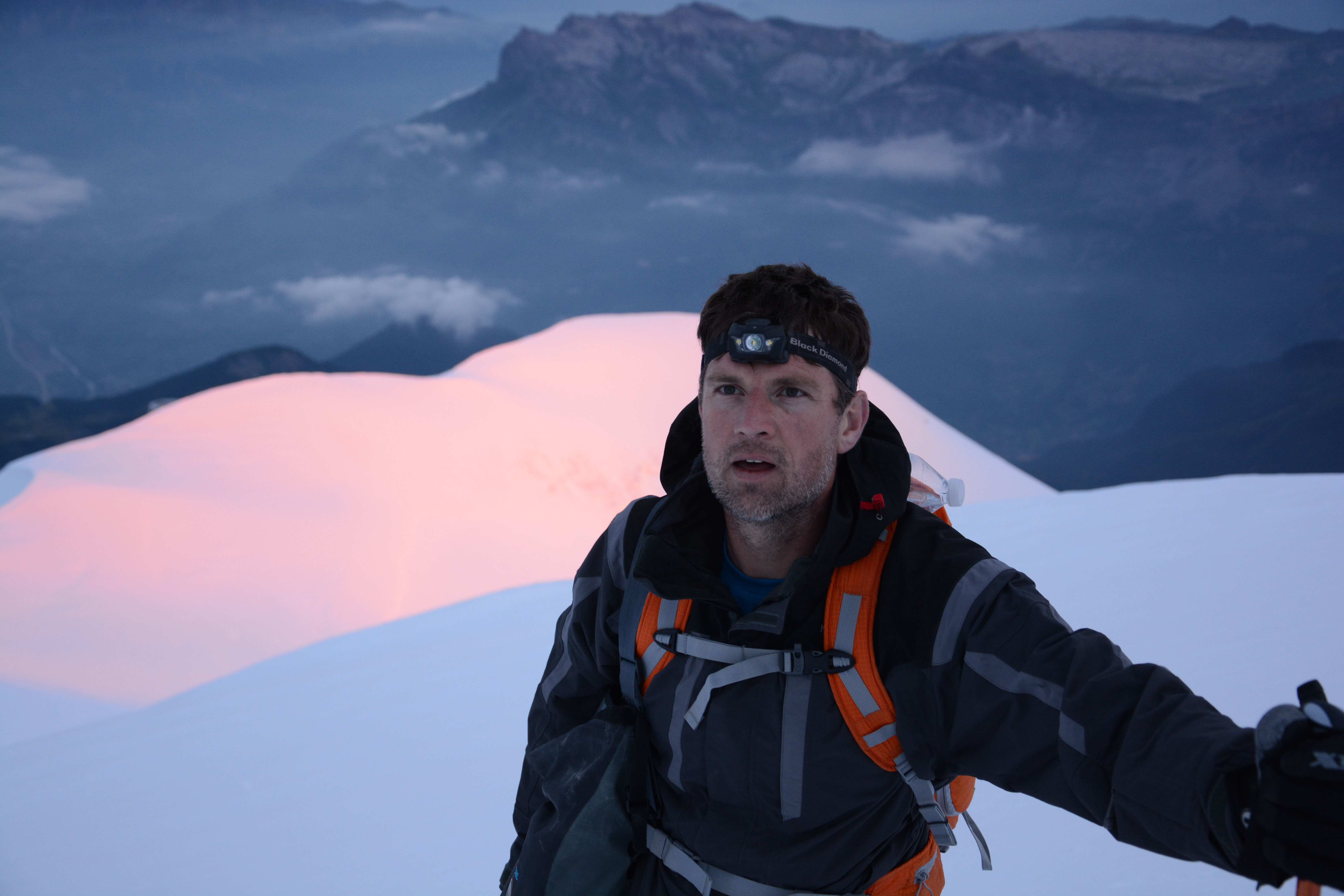
Author of Caving, Canyoning, Coasteering…, a recently released book about all kinds of outdoor adventures around Britain, Pat Kinsella has been writing about outdoor pursuits and adventure sports for two decades. In pursuit of stories he’s canoed Canada’s Yukon River, climbed Mont Blanc and Kilimanjaro, skied and mountain biked across the Norwegian Alps, run ultras across the roof of Mauritius and through the hills of the Himalayas, and set short-lived speed records for trail-running Australia’s highest peaks and New Zealand’s nine Great Walks. A former editor of several Australian magazines he’s a longtime contributor to publications including Sidetracked, Outdoor, National Geographic Traveller, Trail Running, The Great Outdoors, Outdoor Fitness and Adventure Travel, and a regular writer for Lonely Planet (for whom he compiled, edited and co-wrote the Atlas of Adventure, a guide to outdoor pursuits around the globe). He’s authored guides to exploring the coastline and countryside of Devon and Dorset, and recently wrote a book about pub walks. Follow Pat's adventures on Strava and instagram.